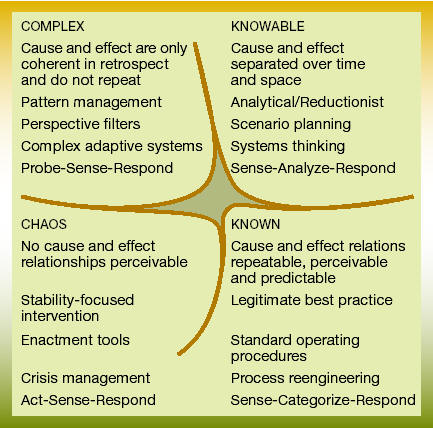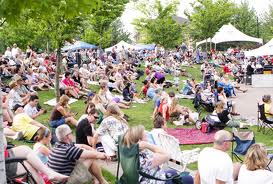Warren Karlenzig's TEDx talk about using collective intelligence to co-create cities of the (near) future. Recently the city of Chilliwack unveiled a new plan for the downtown. It seems like a great, values and vision based plan to revitalize the downtown core. The idea is to create the conditions that could facilitate development of a Live - Work - Play neighborhood. On the surface it appears like a great idea and yet for some reason it has rankled me from the beginning. I can finally put words to that gut instinct, so here goes.
The downtown plan
The plan is simple. Level the city owned building that no one seems to be able to figure out what to do with and thereby create a blank slate.. ok, not quite a blank slate.. for developers to paint a city scape on. The deal is that the boundaries are set by the city, the canvas is a bit limited as are the colours but outside of that you are invited to invest by building something that allows people to live, work and play in that neighborhood. Fair enough.Gentrification of the downtown core
One of the challenges I have with this is related to the reality of the downtown core. The people that already live, work and play there will be displaced if this plan comes to fruition. Cost of living in the area will go up and the police will be instructed, or they will take it upon themselves, to move the sex trade workers, dealers and downtrodden out of the area. Ya, we are talking gentrification here folks. And lets be very, very clear about one thing. This will not solve the problems of complex trauma and the symptoms that state produces - addiction, self harm and violence. They will just move a street over, as they did in Gastown.Systems thinking done wrong
The other challenge I have with the plan is that it's based on faulty thinking. It uses a model of thinking and planning that is excellent when the problem is complicated but lousy with the problem is complex. The nut shell explanation of the difference is that sending a man to the moon, or landing Curiosity on Mars is complicated while raising a child is complex. City planners would love to convince you that planning a neighborhood makeover is complicated and therefore the tools of the complicated domain will work. They are wrong. Revitalizing the downtown core has more in common with raising a child than it does sending a piece of equipment into space.Planning in the complicated domain
In a complicated environment you can create a community or organizational vision, determine where you are now, measure the gap and then create a stepwise plan to close the gap. It works. I use it all the time... in complicated environments. We define good practices, measure for progress against the plan, and if problems arise we call in experts. The problems are known or at least knowable as are the solutions. The process that works in this domain is to Sense (survey, study, research) what is going on, Analyze the situation(s) and Respond based on the analysis.
In the Complex Domain what works is to Probe-Sense-Respond... repeatedly. Very much like raising a child. You create safe to fail experiments called Probes. Notice the effect of the probe, especially the probes that do not work. Have in place a way to amplify probes that do work and dampen probes that don't work. Safe to fail examples in child rearing could be the many different ways to try and get a teenager up for school on time.
- it's time to get up dear
- get up now, get up now, get up now...
- get up or else
- buy kid an alarm clock
- leave it up to the kid to get themselves out of bed and accept the natural consequences
- negotiate a strategy
Once heritage buildings are torn down, they are just gone. The possibilities become very limited. Now that we have invested in and approved a city plan other options will not be seen.The city has decided to limit the possibilities for an emerging downtown core as the only strategy. It will be awesome.. if it works. It is not however a safe to fail plan. Once heritage buildings are torn down, they are just gone. The possibilities become very limited. Now that we have invested in and approved a city plan other options will not be seen, at least not easily seen.
Other ways of growing a city
The third challenge I have with this plan is that it shines a light away from developing neighbourhoods where they are. It is destined to become like neighbourhood described by Thomas Vander Wall, below.Santana Row is a 3 by 5 block grid of new urbanism mixed use and walkable planning (one of many of efforts by Federated Realty). It is a highly designed community that is an oasis or aberrant outlier in the whole of San Jose city, depending on one’s perspective. As stated by Gordon Ross' wife, “it is a great place to walk around if you drive there”. Santana Row heavily proscribed design of space and use focusses the ground floors of the 3 to 5 story building to stores and restaurants and the upper floors for office and living space. It could be viewed as quasi-self supporting (lacking industrial and agricultural elements) for the roughly 1,000 people who live/work there. This village has a strong central management that proscribes use, design, and development of what happens in the bounds of the 3 by 5 grid bounds. It is not designed for emergence other than varying occupants of the spaces, which can be somewhat flexible, but it is largely held with in the already defined bounds. As more natural social environs can grow, morph, and be emergent at, within, and beyond its initial bounds this planned village is less emergent and flexible. Use is constrained, for good or bad, by the heavily designed space. It is a social space that has set infrastructure, use, and size constraints that keep the development functioning with the same of similar vibe and experience across time.The kinds of neighbourhoods that I believe we should be encouraging are not completely emergent. That would be chaotic. What I'm pondering is what if we started with what we had? I live in an area of Chilliwack that, according to Walk Score, is a solid 27 (out of 100). That means I really can't walk to any business or amenity that I might need in a day. To walk to the nearest convenience store is 30 minutes round trip with half being up hill.. and we have weather and the occasional bear. This is a neighbourhood where lots of people, including me, walk a lot... for exercise, not to get things done. Other than the neighbourhood stores - we have two, one on one corner and on on the other - we also have a private liquor store, a Japanese restaurant, a video store, tanning place, hair salon, small coffee place, and two pizza places. All of these are located on one corner. WT!? What would it be like if some of these businesses were scattered around the neighbourhood so more people were likely to walk to them? By having only one commercial "corner" in a residential area it limits the possibility of having more services scattered across a larger area. Centralized design may solve some problems but limits possibilities overall. If I want anything other than what my corner plaza offers I have to drive or take one of the infrequent buses. I would take public transit more often if it was cheaper and more convenient. That has to happen first. Why don't we have small, electric (they can plug in at city hall now) powered vans that pick up from more places more often? Or better yet how about a fleet of shared smart cars and electric bikes. I can't afford one personally but would love to be able to use something more economical for trips into the city proper. I work in the Fraser Canyon so need a 4 wheel drive with room for passengers but would really rather drive something more enviro-friendly when possible. To work, either of these ideas would need to be easy and cheap-ish. I'm thinking of the systems in Paris to rent bikes.
Anyone can pick up a bike at any metro station or anywhere there's a "borne" (stand) of bikes, ride around for half an hour, and then leave it at any Velib' stand. The first half hour is free, and not only that, the bikes themselves are extremely cool, a sort of futuristic bike that makes you feel like there is nothing more high-tech and advanced than a bicycle. (bikes designed by French designer Patrick Jouin)With smart technology all the reasons people had for thinking it wouldn't work.. well things have changed. I guess my point here is that instead of focusing so much time and energy on a prescribed downtown core facelift how about focusing on the areas where development is already happening and adding to those. Why aren't we talking more about adding Live to existing Work - Play neighbourhoods like Eagles Landing fro example. Why aren't we distributing services to neighbourhoods instead of putting dollars into concentrated design.
Moores Law and the speed of change
That brings me to the last reason for my reluctance to embrace the cities plans for the downtown core. Things are changing at a speed we have never seen before. It's as if Moores law now applies to everything. What I mean is that the things we think are impossible today may be the obvious solutions tomorrow. Literally. That means we need to start thinking with a complexity mindset. We don't know the questions or the answers today because we haven't really got a firm grasp about what might be possible tomorrow. The processes we use to make decisions, make plans and develop communities has to change to a more flexible and reflective model that facilities emergence. Collective intelligence is one way to improve both decision making and the execution of decisions or plans. In complex, adaptive systems, vision, mission, goal setting, aka traditional leadership models and tools will not work... or they will work but with unintended and unpredictable results.Building on success

You know what gets me? There are some awesome examples of things that are working downtown. Party in the Park is a prime example. That event, working the way it did, should be looked at. It was a Probe. A safe to fail experiment in community building and connecting. Now we need to Sense and Respond. Why did it work? What about it worked? Did it fill a common need? What need did it fill? Does that need tell us something about community engagement? Does it's success tell us something about our community? Is there an opportunity to fill that need in another way, at another time, in another space? What else could work? How would we know if something else worked? What is the amplification strategy? If it doesn't work what can we do to stop or minimize? Don't go getting all "best practices" here or even "let's have a six month long, closed door, invitation only, inquiry". That's not what I'm suggesting. I wondering about entering into a process and mind set that facilitates learning in the present and uses that knowledge to create another safe to fail experiment. Party in the park was a safe to fail experiment that went well and will most likely continue to do well. Bulldozing part of the downtown core in the hope that some company somewhere might someday buy into the official city vision... I'm not so sure about that.
No comments:
Post a Comment